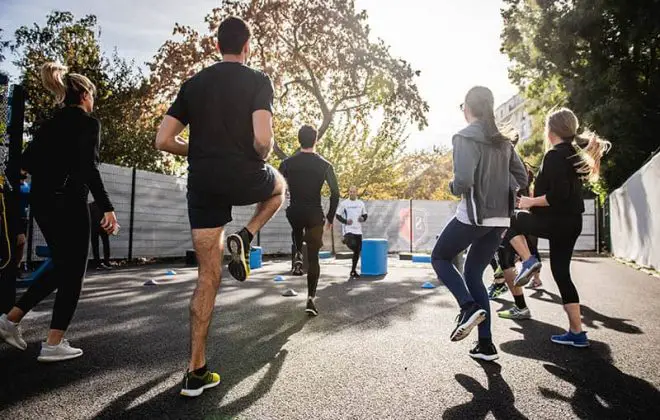Heart Rate Training Zones – Complete Guide To Endurance Gains
I used to be really bad at listening to my body. In fact, I’d even ignore it trying to push through the pain. The concept of heart rate training zones was foreign to me and the main effort I knew was “beat other teammates”.
My attention was all over the place. The only place it wasn’t at was my body. I compared myself with others and tried to replicate or “beat” them in every training session, which mostly left me tired, over-trained and frustrated from not seeing desired results.
Heart rate training helps to focus on personal goals
While talking with other athletes at one of my first training camps I learned that coach asks them to wear a strange device during training. It was 2005 and the word ‘heart rate monitor’ was not popular. I had no idea what that was or why it’s needed, but was eager to learn. So, I approached the coach to find out.
He told me that he analyses heart rate training data after every session to see how well his athletes execute training programs and how their bodies react. What he also told me was that
It takes a lot of mental strength to push hard during training, but it’s much harder to know when to pull back.
That way, adjusting the training plan to the athlete’s current condition will lead to better and more sustainable results.
To say I was hooked would be an understatement. Until then I only had an on/off switch and thought you go hard in training, recover and repeat the next day. I had no idea how much opportunity there is in varying training intensity. Most importantly, that you can actually quantify and measure it.
I got my first heart rate monitor within months of returning from that training camp and used it daily to track my heart rate before, during and after sessions ever since.
Over the years I learned how my body responds to stress, what effect different intensities and training sessions have on it and, ultimately, how training programs should be designed/adjusted and executed.
Tracking heart rate helps to monitor current fitness condition
During training heart rate serves as a good reference point and, unlike power or speed, shows how intense the effort is on the body. It’s aligned with current condition and will be higher if body is under more stress.
An athlete may be tired, had a restless night or fighting a cold, all of which can impact the session. Focusing on maintaining a certain speed or power in such case will more likely cause more harm than good.
Heart rate training zones help to train at required intensity according to the current condition and not unintentionally pushing the body over the limit.

Using heart rate zones in training quickly improved results from my training efforts, as I learned to listen to my body and was able to better focus on my improvement areas.
I noticed that in most cases what felt like 70% was often 80% or even 90%, as I got carried away competing with others.
It was very useful to finally know what and how to focus on. Over time I learned to balance fatigue and noticed that results from my training improved substantially. I had more energy to go hard when it was required. Also, I recovered much quicker from sessions, as I was not draining energy in vain.
So, how does this all actually work?
5 heart rate training zones explained
So what are heart rate zones?
Each training intensity triggers a specific physiological process and adaptation in the body. Structuring sessions around a certain effort allows athletes to customize their training and adapt it for specific needs.
In essence,
HR zones are ranges of intensities where the heart rate falls in.
There are five zones that categorize every intensity level. I have an entire post about how to calculate heart rate zones and even created a simple online heart rate zone calculator you can use.
What’s important to mention is that cardio zones are always a reference to maximum capacity and current fitness level, so knowing athlete’s maximum heart rate AND resting heart rate is important to set those up correctly.
Which is why using a Target Heart Rate formula (also known as Karvonen formula) will provide more accurate zones, compared to simple percentage of Max HR.
See the video below where I explain what exercise intensity refers to, how to calculate zone 2 heart rate and share the heart rate zones chart.
Once cardio zones are calculated, next step is to create a structured training plan. Every phase of that plan should focus on specific area (endurance/power/speed), measured in time spent in relevant zones.
And that’s all the magic.
If you don’t have a coach, I’d be happy to create a program and coach you. Go to my personal training page for more info.
Heart rate zones – calculation accuracy
There are concerns that if you’re using formulas to calculate heart rate zones you will get very generalized and not overall accurate results. However, actual zone ranges tend to deviate only slightly for each individual. This is not enough to significantly impact the overall benefit from focused training.
Yes, the most precise way would be to take a supervised VO2 max lab test. Ideally sport-specific (i.e. to establish cycling or running heart rate zones). Such test measures the speed of lactate accumulation and respective oxygen intake throughout the exercise. Based on the data aerobic and anaerobic thresholds are established which are key reference points in determining personalized HR zones.
Over the years and multiple lab tests, however, I noticed that these ranges tend to deviate only by around 1-2% (up to 5 bpm).
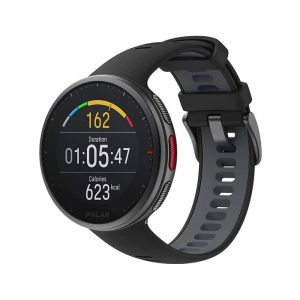
Polar Vantage V2 Multisport GPS Watch

Wahoo Tickr X Bluetooth HR Chest Strap
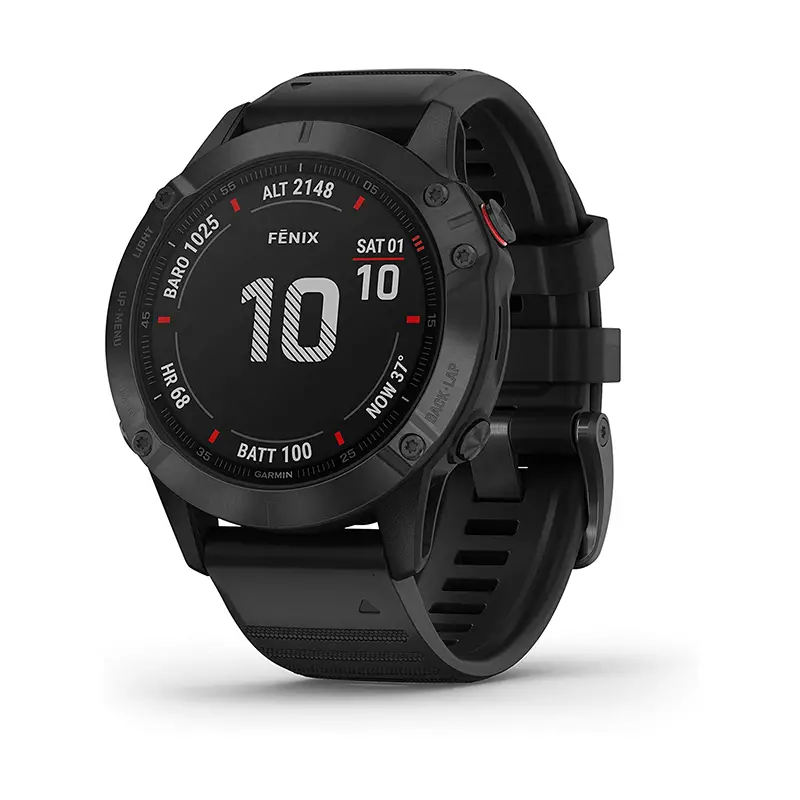
Garmin Fenix 6 Pro Multisport GPS Watch
What high & low exercise intensity refers to?
There’s a bit more than percentages behind the concept of HR zones.
As we increase workout intensity, the body changes the way it sources energy. At low intensity, body primarily uses oxygen (aerobic mode) to convert fats into energy. That process is slow, so at high intensity when the body needs energy fast it focuses on converting carbohydrates (sugars or stored glycogen) to energy instead. This does not require oxygen, so it’s called ‘anaerobic’ mode.
Logically, high intensity training is more taxing on the body and should be approached carefully. Too much too soon can cause all progress to stall and put the athlete into a plateau for quite a while.
To simplify things, there are virtually 2 points around which training zones are organized – aerobic and anaerobic thresholds. As you can see in the HR zone chart below.
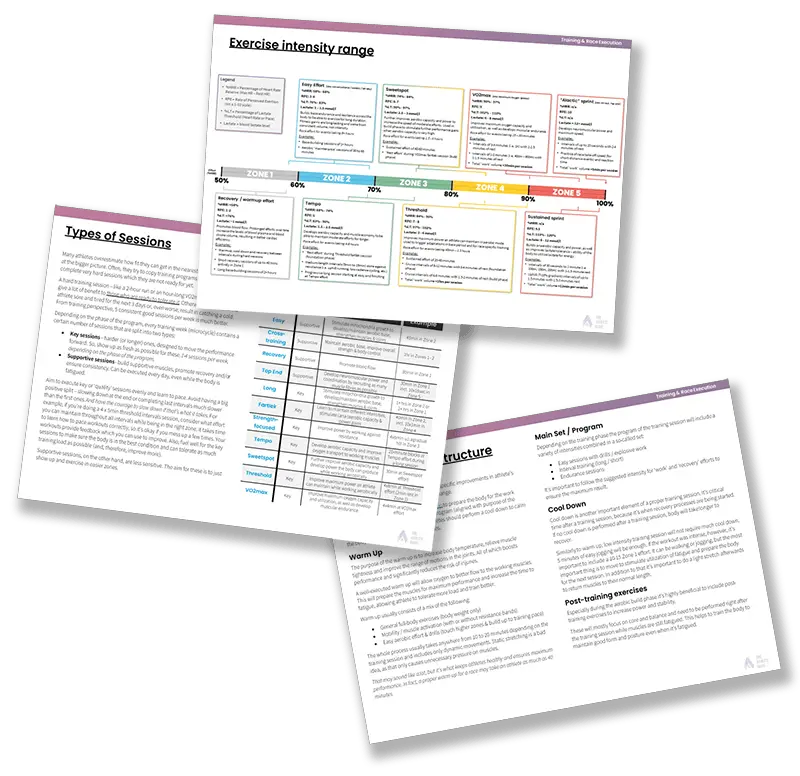
FREE download
Heart Rate Zones Chart & Intensity Cheat Sheet
Grab this FREE cheat sheet and learn the exact formula for building lasting fitness (includes a bonus aerobic base training plan AND 3 strength training to get you started).
How aerobic & anaerobic thresholds impact heart rate training zones?
Aerobic Threshold is the intensity level after which the body starts to slowly accumulate lactic acid (or muscle fatigue). The effort at this moment is still not that hard, so the athlete is able to maintain it for 5,6,7 hours and more.
The higher the aerobic threshold – the faster an athlete can swim/bike/run/etc. for long periods of time.
Anaerobic Threshold, on the other hand, is the intensity level after which the body cannot deal with muscle fatigue anymore. It starts to build up very quickly and there’s very limited time that this intensity can be maintained (minutes only).
More time spent in training around the anaerobic threshold will make muscles more resistant to lactic acid build up. This will help to maintain very high speed for longer (critical for races of 1-5 minutes in duration).
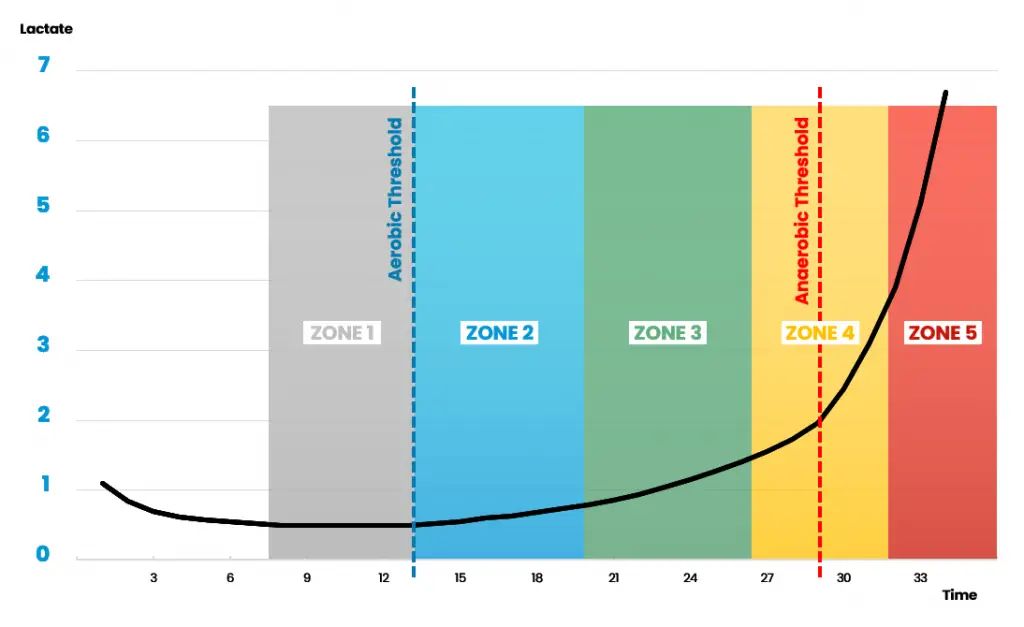
The good news is that both thresholds can be ‘improved’ through a mix of low and high intensity training. That’s why it’s critical to have a training plan with a specific mix of cardio zones focused on the goal race distance.
Zone 1 heart rate – warmup & recovery
Workout intensity: very easy
Target heart rate: 50% – 60% of Heart Rate Reserve (HRR)
Duration: all day, if needed
Zone 1 is the exercise intensity up to the level of the aerobic threshold. The intensity is so low that all lactic acid accumulated or produced in the muscles is being utilized (the line on the graph above goes down or remains horizontal).
Zone 1 training feels almost effortless and i’s the pace you can easily maintain for a whole day (with rest and lunch stops, obviously). It’s the time to chat with others, as it’s possible to hold a conversation, and focus on proper technique.
It’s sometimes called Zone 1 cardio, because spending extended amount of time at this intensity “stretches” the heart and allows it to pump more blood. After this point it’s only the heart rate that increases.
Zone 1 training benefits
As this is a very low intensity zone, training in it doesn’t add fatigue.
Instead, it promotes blood flow to the muscles, which speeds up recovery between intervals or harder training sessions.
Sample Zone 1 training sessions
- Warmup, cool down and recovery between intervals during hard sessions
- Short recovery sessions of up to 40 mins entirely at Zone 1 heart rate
- Long base-building sessions of 2+ hours
- 60 minute session at Zone 1 heart rate with 5-10sec bursts at Zone 5 every 3-5min

Zone 2 heart rate: aerobic base / easy pace
Workout intensity: easy
Target heart rate: 60% – 70% of Heart Rate Reserve (HRR)
Duration: 1+ hours
Zone 2 is often called the aerobic zone. It’s the exercise intensity just beyond the aerobic threshold. Exercising in this zone still feels easy. So easy that you may feel you’re not training hard enough – the athlete should be able to breath through the nose the whole time.
But that’s the beauty of it – by spending extended amount of time just over aerobic threshold the body gradually becomes more endure and is able to go faster at low intensity.
This workout intensity correlates with maximum fat oxidation rates. And athletes who performed a lab-supervised VO2max test are able to set their zones based on that. Training in Zone 2 for an extended amount of time will gradually make the body better at burning fat. Not to mention that overall muscular endurance will increase, making a person more efficient and faster.
Even elite athletes racing in Ironman triathlon spent at least 8 hours completing the course and most of the time is spent at high Zone 2 heart rate. And these guys are able to run a 2:40 marathon at this intensity.
Zone 2 training benefits
Zone 2 is important for all athletes, but is critical for endurance athletes. Training in this zone builds mitochondria in slow twitch muscle fibers, which improves the overall endurance and speed.
Essentially, it makes the lactate line on the graph above stay horizontal for longer.
On top of that, extended easy training teaches the body to utilize fat better and builds a leaner body.
Sample Zone 2 training sessions:
Professional athletes (regardless of the race distance) usually start their season with a 3-4 week training camp where they focus on adding lots of volume in aerobic zone. Every day they would put in 5-6 hours of easy work to train the heart, focus on the form, as well as work on the base muscle strength.
- Long base-building sessions of over 90 minutes entirely at Zone 2 heart rate
- Aerobic ‘maintenance’ sessions of ~30 to 90 minutes with varying intensity
Zone 3 heart rate – aerobic endurance / marathon pace
Workout intensity: moderate
Target heart rate: 70% – 80% of Heart Rate Reserve (HRR)
Duration: long intervals, 10 to 60 minutes
They call this zone a ‘no man’s land’.
It’s challenging enough that you feel you’re out of your comfort zone, but not challenging enough that you can’t sustain it. It’s comfortably uncomfortable.
At this point it’s barely possible to complete a sentence, before catching a breath, compared to conversational Zone 1 & 2 effort.
Many amateur athletes make the mistake of spending almost all of their training time in this zone. It ‘feels’ like you’re training hard and, indeed, athletes build quite a lot of fatigue with it.
The truth is, it does not provide enough intensity to radically improve speed or power, but is not so easy that the body is able to fully recover. So, athletes feel tired all the time, but not necessarily getting faster.
But it doesn’t have to be like that.
Zone 3 training benefits
At Zone 3 heart rate more muscle fibers are engaged and the body builds even more mitochondria in the muscles. On top of that, Zone 3 training trains the body to develop capillary network which helps to transport oxygen to working muscles more efficiently. This leads to improved muscle economy.
What this does is makes those moderate race efforts feel easier and manageable.
This builds that nice cruising speed required in longer-distance races, like half marathon, marathon or even half-Ironman triathlon.
Sample Zone 3 training sessions
Zone 3 training is actually pretty effective if used right. It’s sometimes called ‘advanced aerobic zone’ and the key to it is to use interval method. Instead of just maintaining it throughout the session. This approach will limit the build up of lactic acid in the body, clear the excess and will allow to tolerate more intervals.
- 3×10-30 minutes at Zone 3 heart rate throughout an otherwise long easy session in Z1/Z2
- 6x6min at Zone 3 heart rate with 6 minute recovery in Zone 1 in between

Zone 4 heart rate – anaerobic capacity
Workout intensity: hard
Target heart rate: 80% – 90% of Heart Rate Reserve (HRR)
Duration: longer intervals, up to 10 minutes
Zone 4 is where it gets tricky. Of all 5 training zones this one is the most dangerous.
It’s at this point that most over-training happens. Inspired by professional athletes, people push themselves to the limit without giving the body enough time to recover and supercompensate. This puts a lot of stress on the body, killing mitochondria they’ve worked so hard to build.
From physiological perspective, anaerobic threshold is the point after which lactic acid starts to build up so fast that the body cannot produce enough energy to maintain the intensity for long.
Anaerobic threshold marks the middle of Zone 4 and is highly individual for every athlete.
At this point muscles get petty heavy and it’s possible to say just a couple of words at once.
Zone 4 training benefits
Training around anaerobic threshold builds power in muscles, which allows athletes to sustain very fast speed for longer. On top of that, it utilizes more muscle fibers, building mitochondria in fast twitch fibers.
Zone 4 heart rate will ‘teach’ the body to tolerate lactate better. In other words, the line on the lactate graph above will not be as steep at the end, because lactic acid will accumulate slower.
This zone is especially important for medium distance runners, kayakers and swimmers, whose race distance takes less than 4-5 minutes to complete However, endurance athletes will also benefit from this kind of training, as it improves speed and endurance.

The Resilient Athlete
A Self-Coaching Guide to Next Level Performance in Sports & Life
Are you aiming to become a resilient athlete who is able to withstand any pressure? Be able to jump on any opportunity? Take any challenge life throws at you head on?
Then this book is for you.
Learn moreSample Zone 4 training sessions
This is the zone where intensity is very high and it may be tempting to go all out. The trick, however, is to avoid complete exhaustion and, instead stay within the 80% – 90% workout heart rate zone.
The goal of Zone 4 training is not to run every interval at maximum speed.
Think of it as splitting a longer distance into smaller chunks and adding short recoveries in between (like splitting 5K effort into 5x1K efforts). That way you’ll be able to run every interval at speed just slightly over one you would maintain for the full distance and gradually train the body to hold it for longer. That’ called Vo2 max training session.
As this kind of training builds a lot of fatigue, my advice is to start adding efforts at Zone 4 heart rate only after spending enough time on aerobic base (around 40-60 hours in total). This will help to build endurance and improve recovery speed to tolerate the effort.
- 2 sets of 4×2 minutes at Zone 4 heart rate with 1 minute rest
- 10×1 minute hard with 1 minute rest

Zone 5 heart rate – maximum effort / speed training
Workout intensity: very hard
Target heart rate: 90% – 100% of Heart Rate Reserve (HRR)
Duration: short intervals, up to 40 seconds
Zone 5 is the ‘all-out’ effort – the maximum what muscles can produce. At this intensity massive amounts of lactic acid are produced and it’s impossible to utilize it. Muscles get so tight that an athlete is forced to slow down.
Regardless of how good the athlete is, he can only maintain his top speed for several seconds. Even 100m sprinters can maintain their top speed for only around 50m in the middle of the distance, before slowing down towards the end.
At this point the athlete is breathless – theres’s no way he is able to speak even a full word.
Zone 5 training benefits
Training in this zone focuses primarily on maximum speed. However, because maximum intensity utilizes all muscle fibers, there’s also an endurance benefit to it. If not done to complete exhaustion, this training builds mitochondria in fast twitch muscle fibers, improving athlete’s endurance.
This is why athletes incorporate drills and short pick ups to maximum speed in their sessions.
Zone 5 training is also good for practicing starts and working on reaction time.
Sample Zone 5 training sessions
Maximum effort training is done mostly by time, not by heart rate. In reality, you might not even reach Zone 5 heart rate throughout your session. But it doesn’t mean that you’re not inducing the right amount of stress on the body.
However, heart rate is a great way to check if the body has recovered from the intervals. As soon as the heart rate can’t drop to Zone 1-2 after 2-3 minutes – it’s time to end the workout.
- 5 sets of 3×20 seconds very fast with 20 second rest
- 10×40 seconds with 2 minute rest
- 60 minute Zone 1 session with 5-10sec sprint bursts every 3-5min
Did you find this information useful? Share the post with others using the buttons below.
Have you had some experience with HR zones already? Or are you just learning about it? Either way, share your experience in the comment section below.
What’s next?
Have you picked up my heart rate zones chart already? If so, now it’s time to sit down with the coach and create a training plan that focuses on improving your fitness and making you fitter and faster.
Have an opinion? Share via links below and tag @theathleteblog
Tags In
Andrejs
GET A FREE TRAINING PLAN
Subscribe to my email list and get access to a free 4-week “back in shape” training plan
You’ll also get two full-body strength sessions and some other goodies!

How did I get here?
Hey there! My name is Andrejs and I am here to inspire, entertain and get you fit for any adventure.
I went from being an over trained pro athlete to an endurance coach sharing how to listen to your body and live life to the fullest.
Traveling, new sports & activities brought new meaning to my training and made it much more effective, fun and enjoyable. And I'm here to help you do the same.
